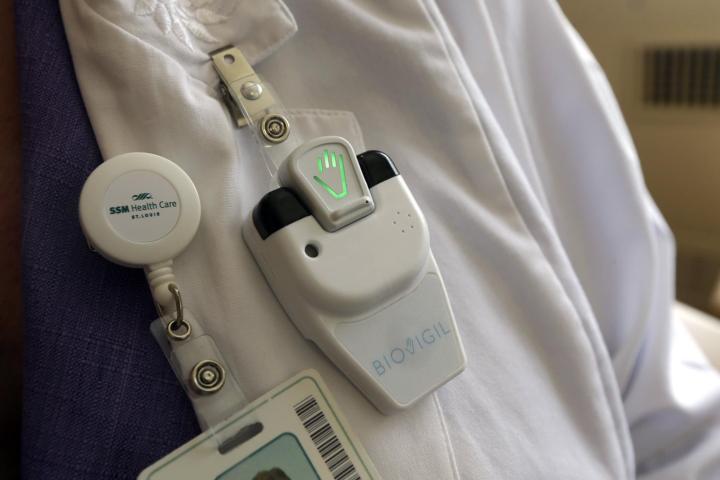
However, the badge system also communicates with a secondary sensor that’s installed in each patient room. If the sensor detects repeated visits within multiple rooms in the hospital without chemical sensor checks, the light on the badge will turn yellow, then eventually red if continually ignored. Assuming the badge is visible, this will be a warning sign to the patient as the doctor or nurse enters the room. Mentioned by Wired, recent studies indicate that hospital staff only wash their hands between 10 to 50 percent of the time when visiting a patient.

During the employee’s shift, data collected includes the number of times the employee washed their hands and the number of times an employee visited sensor-equipped rooms within the hospital. Similar to the Fitbit device, all that information is uploaded when the Biovigil badge is attached to the charging station.
Speaking to Wired about the simplicity of the device, Biovigil CCO Brent Nibarger said “A five-year-old can understand it, and a 90-year-old patient understands it. Everyone understands traffic light simplicity. Once you wear this on your chest and have your first patient interaction it instantly changes the accountability and behavior, because no one is going to be running around with a red badge, except in rare circumstances.”
A competing company, General Sensing, has a similar badge that uses a buzzing notification to alert a medical professional when hands are being detected as unclean. However, this device lacks the same transparency for the patient as the Biovigil badge. With a LED visual indicator for everyone to see, co-workers can help remind each other when to wash their hands again. Interestingly, a 2013 study showed that the frequency of handwashing skyrockets when medical staff are being monitored, hitting rates as high as 88 percent when spot checking.
The need for these types of devices is also being encouraged by the U.S. government through regulations that will strip a hospital of Medicare funds if too many patients are getting infections while in the care of the hospital. With that in mind, the cost to hospitals is approximately $2 to $3 per day for each room. Hypothetically, the hospital could easily pass that cost along to the patient while using it as a marketable feature for any potential patient that’s wary of contracting an infection.


